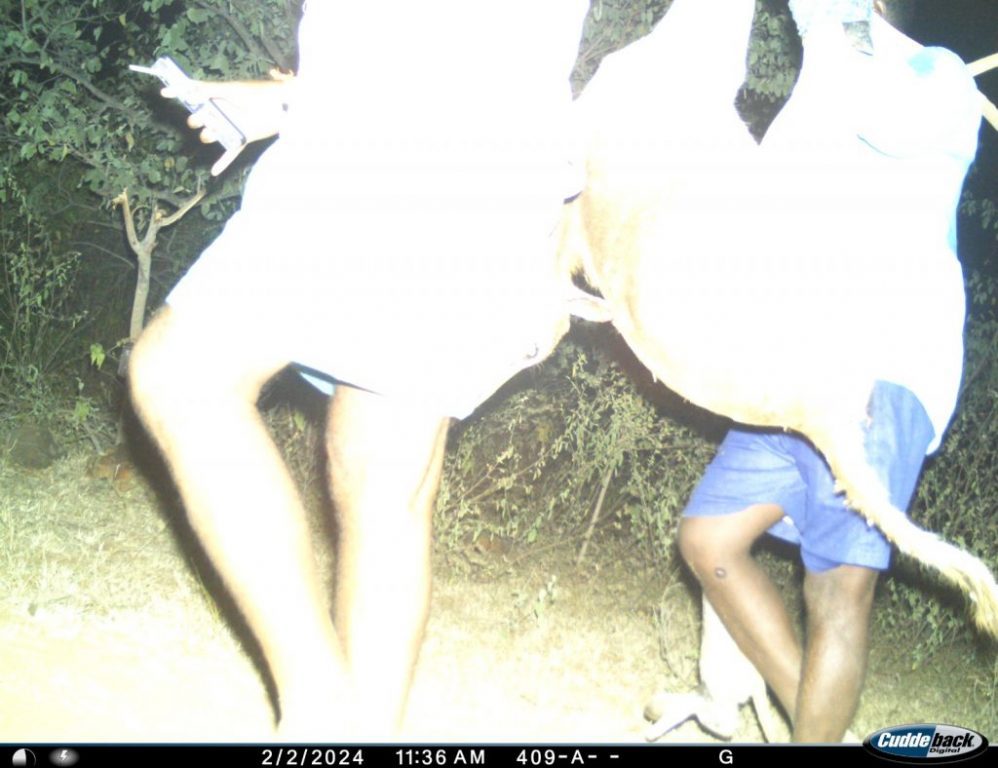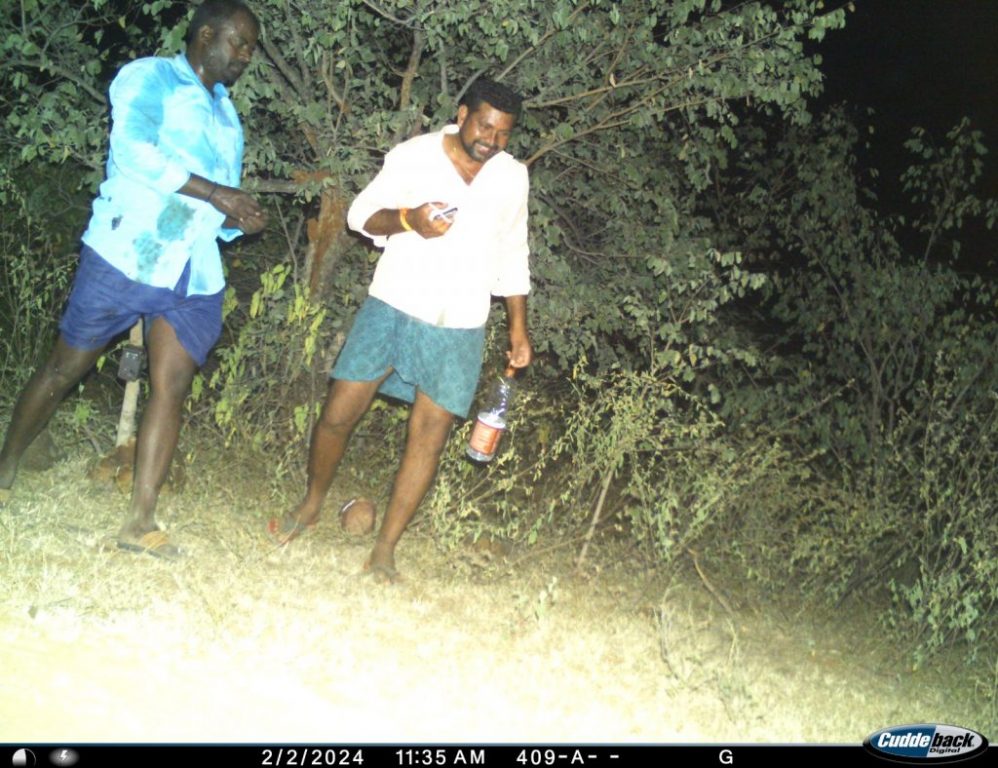A recent incident in the Amrabad Tiger Reserve (ATR) highlights the ongoing battle against wildlife poaching in India. Four Nilgai poachers were captured on camera traps set up by forest officials as part of their regular animal estimation exercise. Camera traps bust poaching ring in Amrabad.
The incident took place in the Umman Penta beat of the Pandigundam range. On February 2, 2024, forest officials deployed camera traps in the area as part of their Phase 4 program.
While reviewing the camera data on February 23rd, officials spotted two individuals carrying a freshly hunted Nilgai, an antelope species. Two other accomplices were identified later, leading to the arrest of three individuals.
CAMERA TRAPPING
Speaking to Indian Masterminds, DFO Rohith Gopidi of the Amrabad Tiger Reserve shared insights into the incident and the department’s efforts. He explained that camera trap Phase 4 involves setting up camera traps in grids across the reserve for 30 days to monitor animal populations. In this particular block, the cameras captured suspicious activity, prompting further investigation.

“After 15 to 30 days, we typically retrieve the captured data and transfer it to our systems before redeploying it to another location. However, prior to deploying it elsewhere, we review the captured data. In one of the images, we noticed that several individuals were very close to the camera trap and appeared to be carrying something,” Mr. Gopidi shared.
This is not the first time camera traps have exposed illegal activity in the reserve. Mr. Gopidi mentioned previous instances where cameras captured individuals taking meat from carcasses left by leopards. In the other incident poachers were carrying sambar meat. These incidents highlight the constant vigilance required to protect wildlife.
“The Nilgai poaching incident that came to our attention has shocked us, as we didn’t expect someone to dare to do this after so many people have been caught,” the officer said.
THE FIGHT CONTINUES
While poaching incidents have declined in recent years, Mr. Gopidi acknowledges that the practice has not stopped entirely. He emphasizes the importance of educating local communities, particularly tribal groups, about the legal and environmental ramifications of poaching. “Unfortunately, many of the perpetrators are local tribes, but everyone must be taught to respect the law. In addition to phase 4, each range has 20-25 fixed camera trap locations that we regularly monitor,” he added.
Interestingly, two of the individuals involved in the Nilgai poaching incident were forest watchers themselves.

COMMUNITY COOPERATION
The investigation into the Nilgai poaching is ongoing, with authorities are trying to determine the intended purpose of the hunt, whether for personal consumption or commercial sale.
Mr. Gopidi credits the professionalism of his team and the cooperation of local villagers for the success in apprehending the poachers. He mentions instances where villagers themselves have played a crucial role in bringing poachers to justice, a positive sign in the fight against wildlife crime.
The Amrabad Tiger Reserve incident serves as a stark reminder of the continuous challenges faced in wildlife conservation.

































